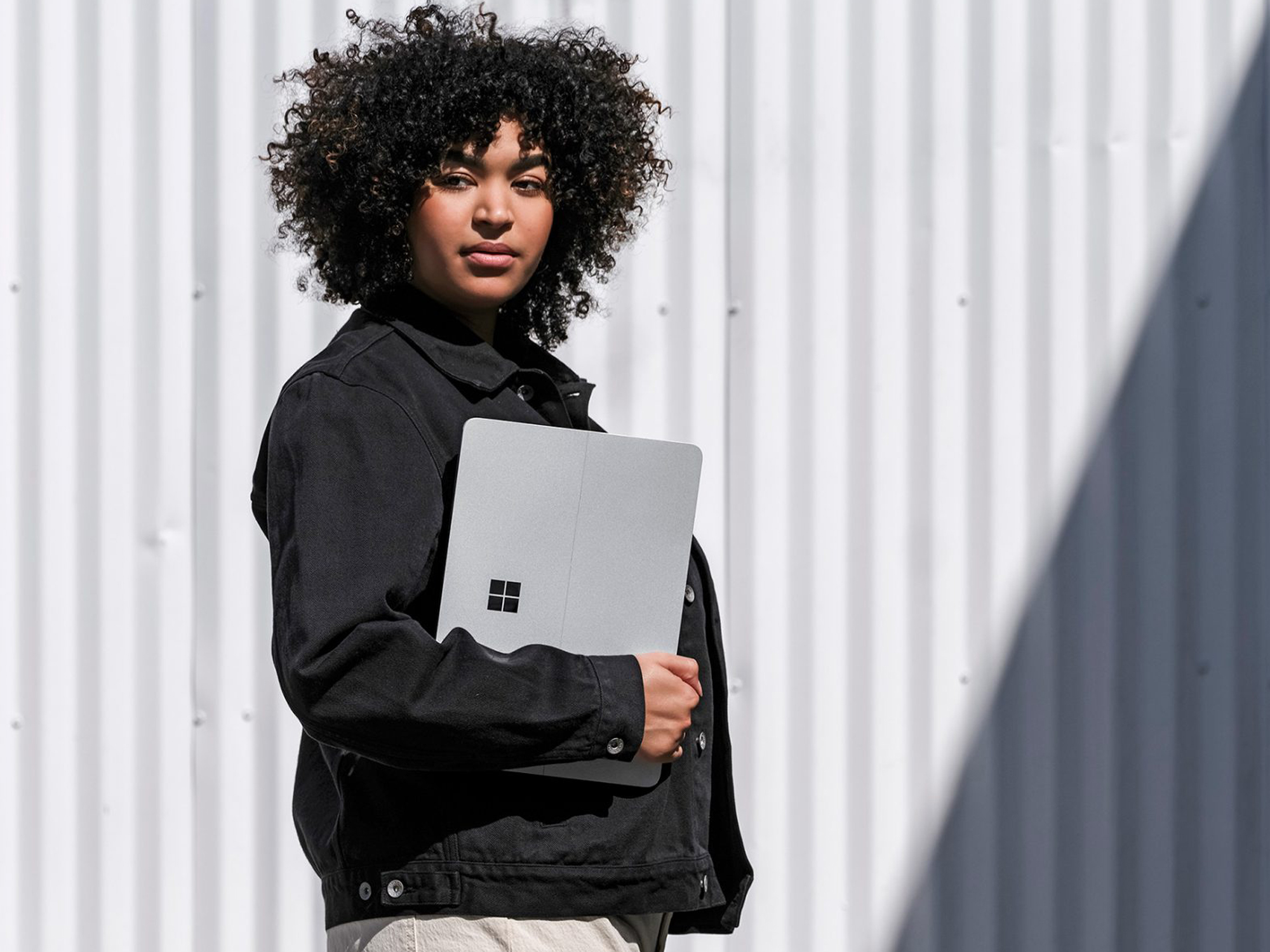

Windows 11 isn’t the first operating system Microsoft has tried to get working on tablet devices, but it’s probably the best attempt yet. The software is quite comfortable on touchscreens and tablets that lack a keyboard and mouse.
If you have a Windows 11 tablet or a laptop that can transform into one (a 2-in-1), you’ll see that the OS can automatically adjust some settings itself when it notices there are no input peripherals attached and you’re just using touch to move around the system—for example, the icons on the taskbar get a little bit bigger and a little more spaced out.
But there are also options you can adjust manually to make sure your Windows 11 tablet experience is the best it can be—from increasing the size of on-screen text to bringing up the software keyboard built into Windows 11.
1. Know your gestures
Windows 11 supports a number of useful gestures that you can use with tablets (and laptops with touchscreens) to get around your apps more easily. For example, swipe down with three fingers to hide all application windows and see the desktop; swipe up with three fingers to bring the program windows back again.
You can also swipe left or right with three fingers to switch to the application you were using just before the one you’re currently looking at, then repeat the gesture to go back to the first app. In other words, swipe left or right with three fingers on the screen to keep switching between the two most recently used programs.
If you use virtual desktops to organize your windows (press Win+Tab to manage and create them), you can use gestures to move between them. Press and hold on the screen with four fingers and the current desktop should shrink in size. Keeping all four fingers pressed down, you can then swipe left or right to move between desktops.
2. Scale up the interface
Having bigger menus, buttons, and other screen elements can make working in Windows 11 on a tablet much easier. To set the size of interface objects, open Settings, then choose System, Display, and Scale. You can choose from the options provided or enter a custom scale level between 100 and 500 percent. The higher you go, the larger everything on screen will be.
3. Turn on rotation lock
One of the ways Windows 11 tries to help you while using a tablet is by readjusting the screen orientation as you move the device—from portrait to landscape and back again as you rotate the tablet around.
Most of the time, you’ll want this to happen, but there might also be times when you want the rotation to stay fixed instead. From Settings, pick Display and turn on Rotation lock. You can also specifically set the orientation via Display orientation.
4. Automatically hide the taskbar
If you’re using Windows 11 on a tablet, you’ll want to make sure there’s as much space on screen as possible for your programs—and what’s more, you won’t want to be accidentally launching applications or settings panes by touching the wrong part of the display.
One way to fix both of these problems is by having the taskbar automatically hide itself. You can always bring it back if you need to. Open Settings, then pick Personalization, Taskbar, and Taskbar behaviors, where you’ll need to check the box marked Automatically hide the taskbar.
5. Open the virtual keyboard or trackpad

When you’re using Windows 11 in tablet mode, without an attached keyboard, the on-screen keyboard will show up automatically whenever you have some typing to do (like when you need to enter a password).
You can also bring up the keyboard anytime you like by tapping the keyboard icon on the far right-hand side of the taskbar. To make sure it’s always visible, go to Settings and choose Personalization, followed by Taskbar and Taskbar corner icons.
At this point, you’ll also get the chance to enable shortcut buttons for both a Touch keyboard (for typing) and a Virtual touchpad (for emulating clicks and touchpad movements). If you choose to put them in place, they’ll show up on the taskbar. Tap them to bring the keyboard and the touchpad on screen whenever necessary..
6. Use snap layouts with your windows
Windows 11 lets you snap program windows to the side of the screen, a trick that can be useful for keeping everything well organized on your display. To snap an application window, press and hold on its title bar, then drag it to the left or right edge of the screen as needed.
7. Buy a stylus
Jabbing around on the screen with your finger is fine, but investing in a stylus for your Windows 11 tablet can elevate your input game to a whole new level. From digital drawing and handwriting to menu selection, it makes everything simpler.
That’s partly to do with the way that Windows 11 handles stylus inputs. If you point a connected stylus toward buttons on a menu, for example, a floating cross will appear on the part of the screen you’re aiming at, making it easier to select what’s on the display. Speaking of selecting, highlighting large blocks of text or big groups of files are other tasks that are simply easier to do with a stylus.
We can’t fit in a full stylus buying guide for you here, but a quick web search should reveal some strong candidates for the job. When your new tool arrives, you can add and manage your stylus devices from Settings by selecting Bluetooth & devices and then Devices.
